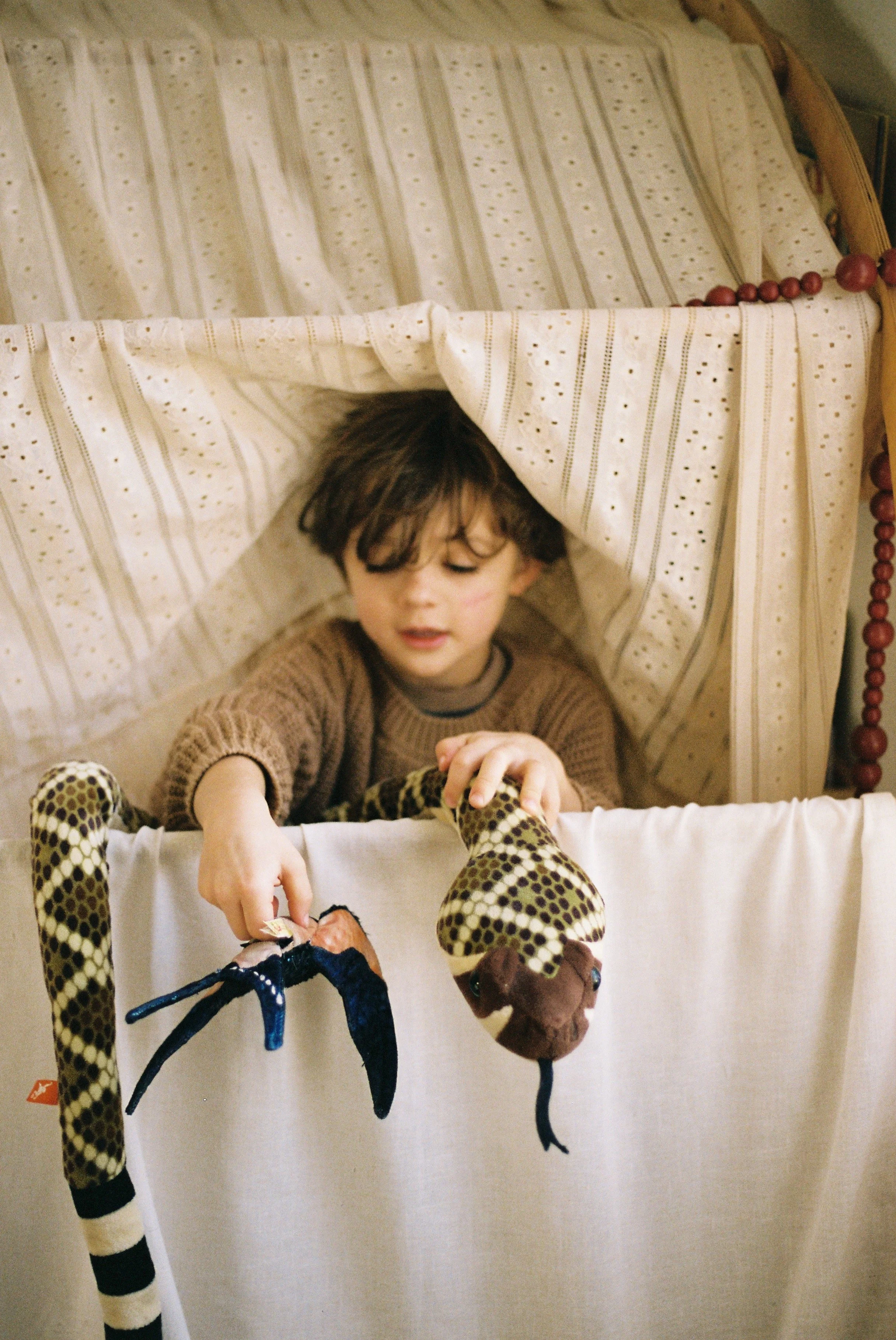
Animal Study: Part II
LESSON 6
Children will share what they have learned about their animal in a fun and creative way.
Optional:
Craft supplies (for creating models, posters, etc.)
Paper, markers, and other drawing materials
Space for a puppet show or presentation.
Materials
Gather materials of choice.
Preparations
Facilitate a supportive and creative environment for diverse expressions of knowledge.
Guide and assist children in choosing and implementing their preferred presentation method.
Observe and celebrate each child's unique way of sharing newfound knowledge.
Encourage collaboration and sharing of ideas among the children.
Objectives for Teachers
Children demonstrate knowledge and creativity through various forms of expression.
Children strengthen verbal communication skills through puppet shows or presentations.
Children foster artistic expression by creating a model animal with a habitat home.
Children reinforce information retention by summarizing facts on a poster.
Objectives for Children

Collect and Connect
Practice saying the poem together with the actions you came up with.
Animals in Winter
When winter comes and it starts to snow,
Animals need food and a place to go.
Bears sleep tight in their den or cave.
Squirrels gather nuts to hide and save.
Birds fly south to the warmth and sun.
Beavers stay in homes until winter is done.

Activity Flow
Begin by discussing the excitement of sharing what they’ve learned about their chosen animal. Today is all about expressing that knowledge in a fun and creative way!
Allow your child to choose how they would like to share or express what they’ve learned. Keep in mind their age and abilities as you give options. Encourage your child to share what they have learned and created with family and friends! Here are some ideas:
Puppet Show or Oral Presentation:
Encourage children to craft a puppet show or share a little presentation about their chosen animal. Offer a designated space for them to incorporate props, drawings, or even homemade puppets. Encourage imaginative play by suggesting they take on the role of a zookeeper, sharing their newfound knowledge with zoo attendees for the day. Highlight the importance of enjoying the process, injecting playfulness into the activity, and fostering creativity.
Model Animal with Habitat Home:
Set out a variety of craft materials and encourage your child to create a model animal and its home.
Before starting, consider discussing the animal's characteristics, imagining what its home might look like, and make a simple plan for your project. Encourage them to add special touches that tell us more about how their chosen animal acts and lives. Maybe it loves climbing trees or has a cozy spot it always naps in. This way they get to play and share what they have learned about their animal in a fun and hands-on way!
Poster Creation:
Supply big sheets of paper, markers, and other drawing tools for your child to create a poster.
Help them draw and color pictures of their chosen animal, and add some of their favorite facts they learned.



